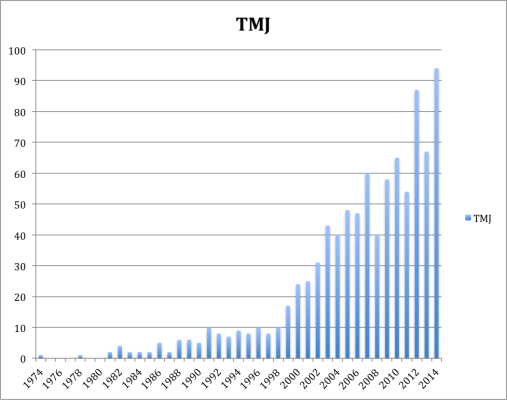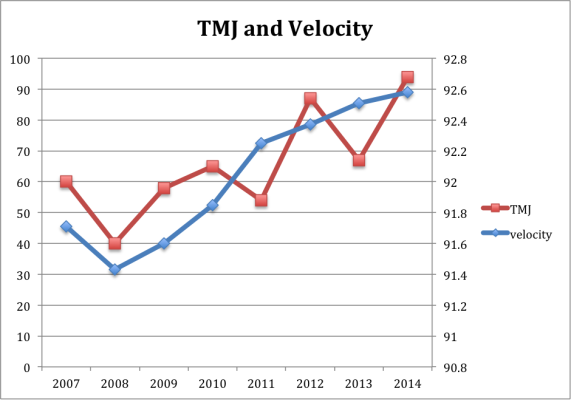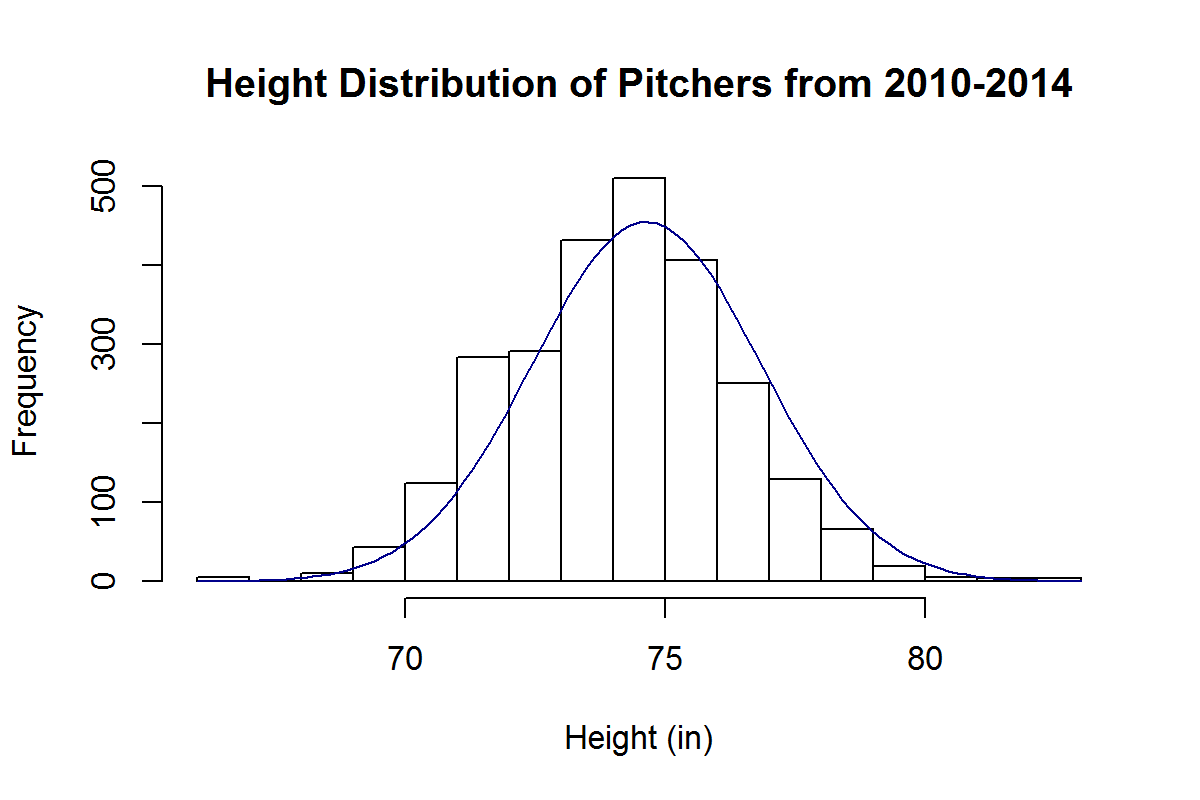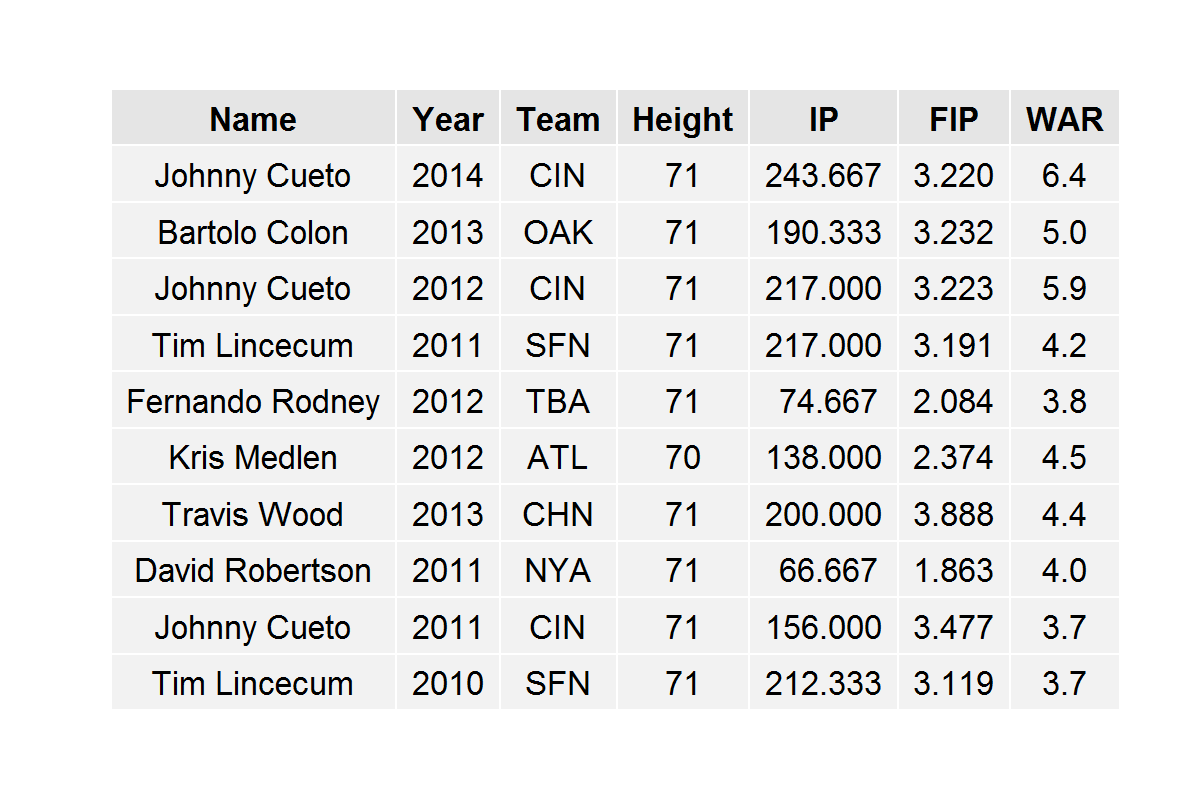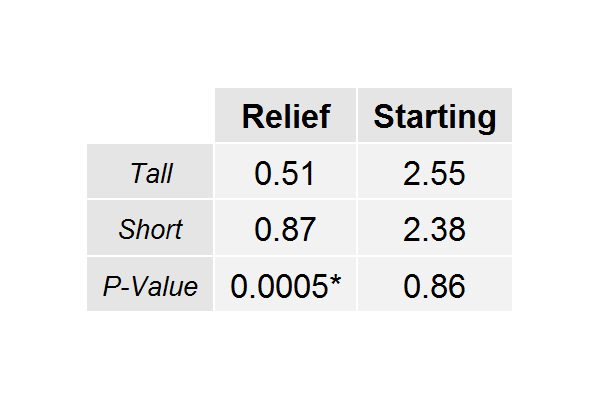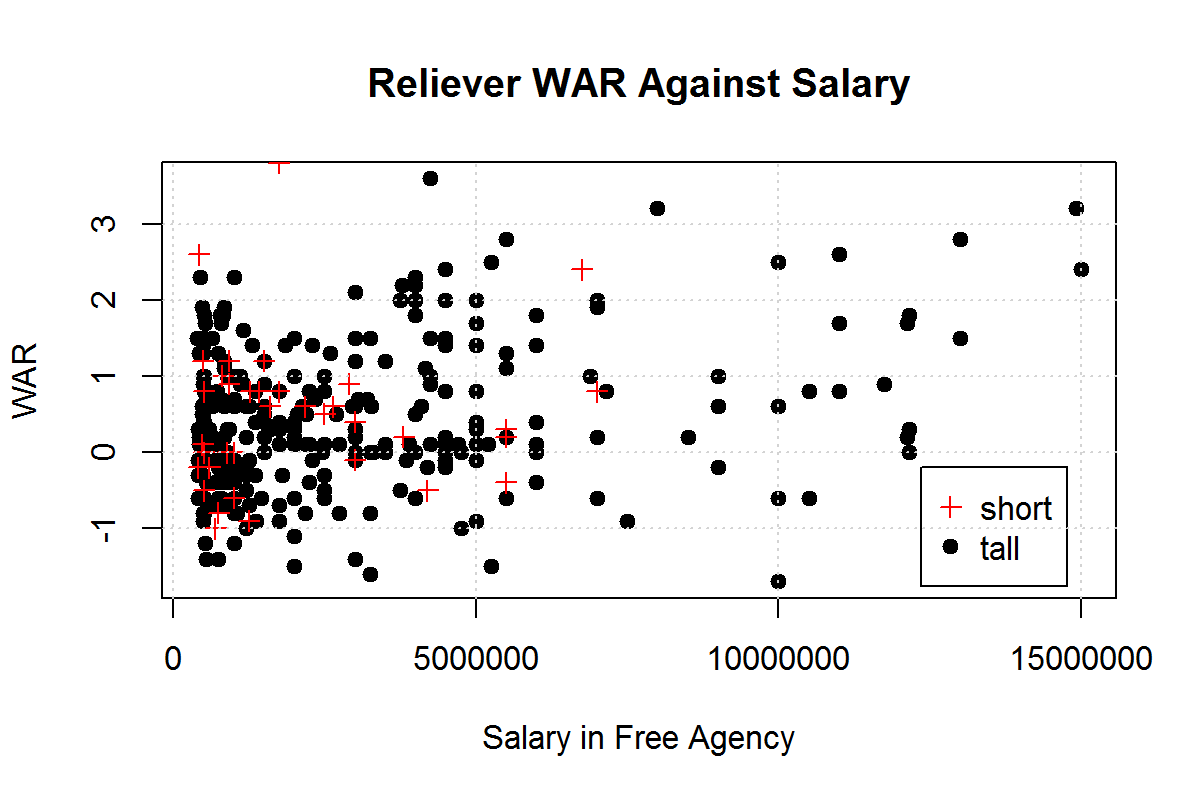No, really. It isn’t. More ink has been spilled on Bryant than on every other just-sent-to-AAA layer combined. So you won’t get any more of that here.
Ok, this is actually a little about Bryant, in the sense that he is a future Cubs third baseman, and this is about the recent Cubs’ third basemen that have gone before him. It is, by and large, an uninspiring lot, but the list reveals something about how the Cubs used to assemble rosters, and how that now appears to have changed.
Here’s a list of WAR that each major-league team has accumulated at third from the beginning of the division era (1969) to the present. If you scroll waaaay down to the bottom you see the Cubs, down there at 25 out of 30. The only teams worse are all expansion teams. Here’s the same list resorted by wRC+. The Cubs inch up to 24, and a couple of storied (or at least old) franchises now appear below them, but the message is essentially the same: a message of dismal underachievement. This message is not confined to third – those of you who are either Cubs haters or masochists can play with those tables and look at the other positions. It’s the same tale of woe except in the few cases where the Cubs have had Hall-of-Fame-caliber players at a position for some length of time (e.g., Sandberg and Sosa*).
What accounts for this prolonged failure? Could it be The Curse? FanGraphs Community sought comment from the Major League Baseball Ruminants Association, and here’s what their spokesgoat had to say: “The Chicago Cubs’ multiple decades of ineptitude have nothing to do with supernatural forces or the actions or inactions of our members. Rather, the Cubs’ continual suboptimal performance is due to that franchise’s historic inability to integrate such concepts as advanced statistics and an even rudimentary understanding of aging curves into their roster assembly thought processes.”
Pretty strong words there from the MLBRA; let’s see if evidence backs them up. What follows is a review of the top 10 Cubs third basemen by WAR since 1969. I’m leaving out guys like Mark Bellhorn and Jose Hernandez who played quite a bit at third, but whose primary position was elsewhere. The fact that I even have to say “I’m leaving out guys like Mark Bellhorn and Jose Hernandez” should be sending visible shivers down your spine.
10. Kevin Orie 684 PA, 79 wRC+, 1.9 WAR, Age 24-29
The only player on this list to come up with the Cubs during the divisional era, Orie got off to a promising start in 1997, with a 101 wRC+ in 415 plate appearances, as well as superior defense. He plunged into the abyss in 1998, and after putting up a 39 wRC+ through July, the disgusted Cubs offloaded him to the Marlins for Felix Heredia, whose left-handed arsenal of kerosene would reward opposing hitters for years to come. If you think baseball players get paid too much, take a look at Kevin Orie’s transaction list on Baseball Reference. This is what life is like for the vast majority of players who aren’t good enough to hold down a steady major-league job.
9. Vance Law 1075 PA, 103 wRC+, 2.3 WAR, Age 31-32
Signed as a free agent in 1988, Law had a BABIP-fueled year in which he also swatted 29 doubles and 11 homers. The alien inhabiting Vance Law’s body returned to its distant galactic home in 1989, and Law reverted to his good-glove, small-stick self. He did get to play in two postseason games in Wrigley, which is two more than the vast majority of living humans can claim.
8. Steve Buechele 1290 PA, 94 wRC+, 3.6 WAR, Age 30-33
Danny Jackson’s disastrous arson spree in Chicago ended in July 1992, when the Cubs traded him to Pittsburgh for Buechele. His main contribution came in 1993, when the BABIP alien returned to Chicago, jacking Buechele’s BABIP up from his career .275 mark up to .305. Buechele produced a respectable 108 wRC+ that year, together with good defense. The rest of his time in Chicago he was essentially a slightly better version of Vance Law.
7. Bill Mueller 670 PA, 112 wRC+, 4.0 WAR, Age 30-31
Acquired after the 2000 season from the Giants for an aging Tim Worrell, who would give them three excellent seasons in relief, Mueller represented a rare venture by the Cubs into the land of sabermetrics. His problem wasn’t sabermetrics; it was injuries. Mueller was an excellent two-way advanced stat contributor when healthy, but in an 11 year career, Mueller exceeded 500 plate appearances just four times, none of them with the Cubs.
6. Steve Ontiveros 1633 PA, 96 wRC+, 4.1 WAR, Age 25-28
The good news: the Cubs got him young. The bad news: they traded Bill Madlock to get him. Ok, the Cubs also got Bobby Murcer in that deal. Meh. Ontiveros had outstanding plate discipline (career K rate: 11.4%; career BB rate: 12.2%), but no power whatsoever (career ISO: .093). Released in 1980, he took his keen batting eye to Japan.
5. Ron Cey 2108 PA, 110 wRC+, 5.6 WAR, Age 35-38
The Penguin waddled into Chicago in 1983 on a salary-dump trade from the Dodgers. He put up good offense for the Cubbies, but by this point in his career had a range not far exceeding that of the third base bag itself. The Cubs probably figured that putting Cey next to an aging Larry Bowa would hide the problem, but Bowa’s range had eroded as well. In 1984, Cey became the first Cubs third baseman to reach the postseason since Stan Hack. I’m sure that’s something he brings up with the grandkids a lot.
4. Luis Valbuena 1241 PA, 100 wRC+, 6.1 WAR, Age 26-28
A waiver acquistion from the Blue Jays in April 2012, Valbuena initially looked like a glove-first utility guy, but his offense gradually improved, until breaking out last year with a 116 wRC+. The BABIP alien is being sought for questioning: Valbuena’s was .294 last year, compared to a career rate of .269. Although he has a reputation as a platoon bat, his career splits are just about even, so he may have a future as a starter, but it won’t be with the Cubs. Kris Bryant’s long shadow led the Cubs to trade Valbuena to the Astros, where he should have an easier time fending off Matt Dominguez.
3. Bill Madlock 1632 PA, 137 wRC+, 11.1 WAR, Age 23-25
This is the kind of trade the Cubs have all too often failed to make: After a disappointing 1973 season, the Cubs correctly recognized that they needed to retool, and thus dealt Ferguson Jenkins to the Rangers for Bill Madlock. In his three seasons in Chicago Madlock supplied excellent offense that outweighed his spotty defense. Then in February 1977 the Cubs sent Madlock to San Francisco in exchange for Ontiveros and an aging, declining Bobby Murcer. This is the kind of trade the Cubs have all to often made. Yes, Madlock had issues, but the Pirates would eventually find a way to make use of him after the Giants also gave up on him. If the Cubs had recognized the value of his talent, they might have tried harder to do the same.
2. Ron Santo, 3135 PA, 122 wRC+, 19.9 WAR, Age 29-33
We now know why Ronnie didn’t age particularly well, but he still put up two outstanding seasons (in 1969 and 1972) and three good ones in his remaining time with the Cubs. His later years seem disappointing only in comparison to his four-year reign of terror over NL pitchers from 1964-67 (with respective OPS of .962, .888., .950, and .906). His lowest ISO during that period was .212 in 1967. The mounds may have been higher back then, but they were never high enough to silence his bat.
1. Aramis Ramirez, 4705 PA, 126 wRC+, 28.5 WAR, Age 25-33
In backhanded revenge for Bill Madlock, in July 2003 the Cubs obtained Ramirez from the Pirates along with Kenny Lofton in exchange for Jose Hernandez and a PTBNL, who turned out to be second round bust Bobby Hill. A particularly fiery pit in GM Hell awaits Dave Littlefield for this awful deal, but one man’s Hell is another man’s Ramirez, and this trade enabled the Cubs to enjoy the only stability they’ve known at third since Santo’s retirement. Ramirez hit 34 homers for the Bucs in 2001, but in 2002 the homers turned into strikeouts. Ramirez made some progress in 2003, but not enough to kill Littlefeld’s sick fascination with Herrnandez, and so the deal was done. Ramirez immediately blossomed with the Cubs, raking at a .233 ISO rate for the remainder of that season, and continuing his excellent output for many years thereafter. He is the fourth best Cubs third baseman of all time, behind only Santo, Hack, and Heinie Zimmerman.
So yes, this list bears out the ruminant’s ruminations, at least to some extent. Ramirez is the only good third baseman since 1969 that the Cubs had control of during his mid-career years. The Cubs often resorted to trading for or signing aging third basemen with declining performance and expanding paychecks, because their farm system had failed to produce anything better. The few young players they did obtain they either failed to develop (Orie, Ontiveros) or gave up on too soon (Madlock). Valbuena is an exception here, but even he is likely to top out as a second division starter at best. And remember, these are the good guys.
So you can see why Cubs fans are so obsessed with Bryant. For many of the last 45 years, the hot corner in Wrigley has been ice cold.
